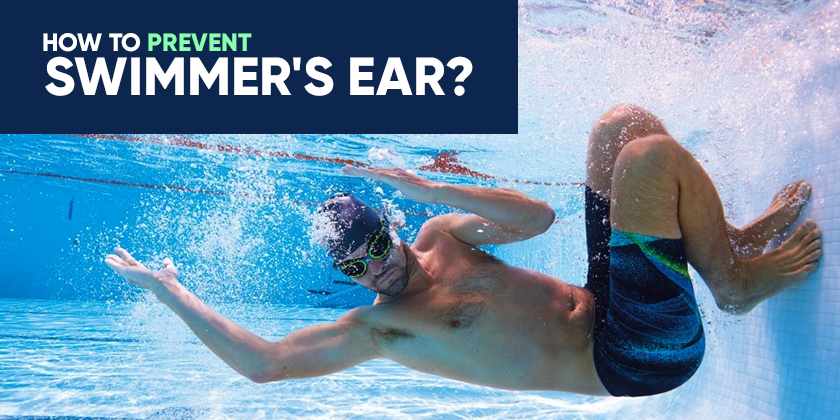
Is It Okay To Swim In The Winter?
December 2, 2020
Can You Swim While Wearing Your Contact Lenses?
December 5, 2020Approximately 10% of people experience swimmer’s ear at some point during their lives.
Swimmer’s ear, an outer ear infection occurs when contaminated water sits in the ear for a prolonged period. This common infection can be excruciating, but you can prevent it by taking a few measures.
Tips to follow before you swim
#1. Put in earplugs – Wearing earplugs designed explicitly for swimming can help keep water out of your ear canals. You can also use a bathing cap that covers your ears completely.
#2. Don’t swim in lakes, ponds, or rivers that contain lots of bacteria – Swimming in water bodies with too much bacteria and harmful pathogens can cause an ear infection. To avoid such a situation, check signs posted around water bodies and look out for bacteria levels. Don’t jump in if it’s not safe to swim.
#3. Make sure pools and spas are clean – Make sure to swim in the pools and spas that are well-maintained and cleaned regularly. You must also ensure that the chlorine and pH levels of swimming pools are maintained as per the CDC guidelines.
Tips to follow after you swim
#1. Shake or drain water from your ears – Once you come out of the water, tilt your head slightly and let gravity do its thing. You can also pull your earlobe at different angles to drain water from your ears.
#2. Dry your ears – Take a clean towel and gently rub it outside your ear. You can also use a hairdryer to dry your ears. Make sure to set your hairdryer on low and hold it about 12 inches away from your ear.
#3. Use eardrops – Get in touch with your doctor and ask for eardrops that can help you dry up any leftover water. Avoid using eardrops if you have had any ear pain, ear surgery, or have a tear in your eardrum (perforated eardrum).
Other tips to protect your ears
Despite the name, a swimmer’s ear isn’t always caused by swimming. It can develop due to various other reasons, such as scratching the inside of your ear canal. It can break the skin and let the germs in.
#1. Don’t put stuff in your ear –You’ve probably heard this before! Never put hairpins, cotton swabs, pen/ pencil, finger, keys, or anything else into your ear canal. They can damage your skin. Also, bits of tissue or cotton can get stuck and break down in your ear, raising the chances of getting swimmer’s ear.
#2. Leave earwax alone – Earwax plays an essential role in protecting your ears. Prying out earwax can raise the odds of getting swimmer’s ear. It also increases the chances of pushing earwax farther into your ear. Consult your doctor to find out a safer way to treat your problem.
#3. Keep hearing aids clean. – Earbuds and hearing aids can scratch your ear canal and lead to a swimmer’s ear. Make sure to clean your hearing aids and earbuds every night to reduce the risk of infection.
#4. Ear balls to avoid infection – Put cotton balls in your ears before using hair spray, dye, or other products. Chemicals in these products can lead to swimmer’s ear in some people.
Also, the chances of getting swimmer’s ear are more if you’re a diabetic patient or have immune problems, like HIV. Consult with your doctor to avoid any serious complications. Your doctor may recommend some extra steps to reduce the risk of swimmer’s ear.
If you still have any doubts, contact Life Saver Pool Fence today!




